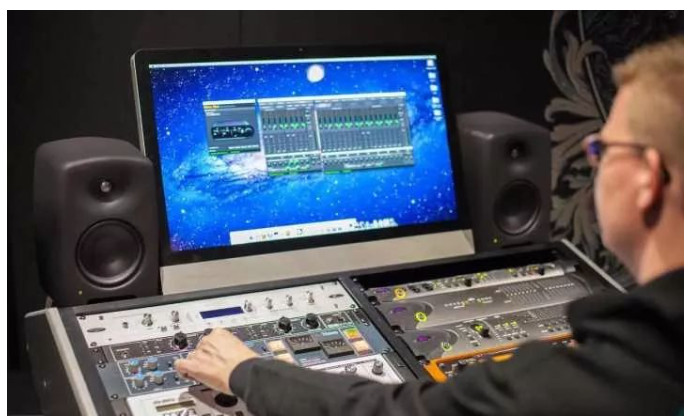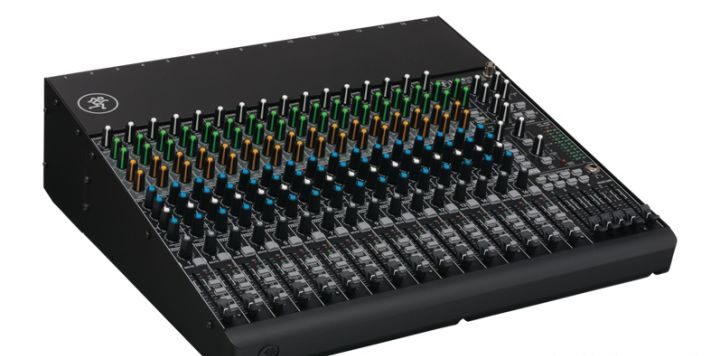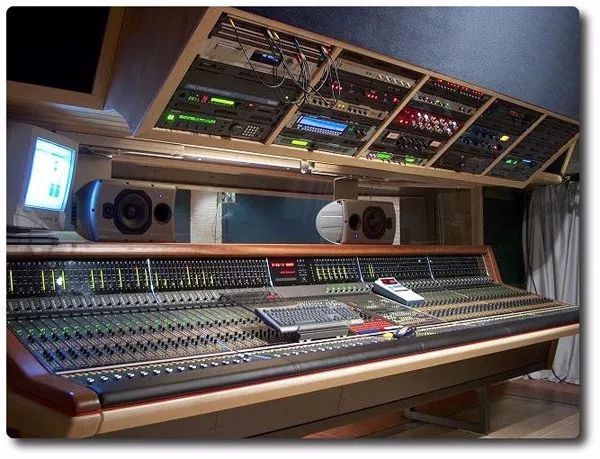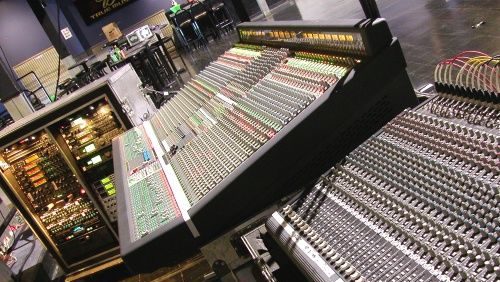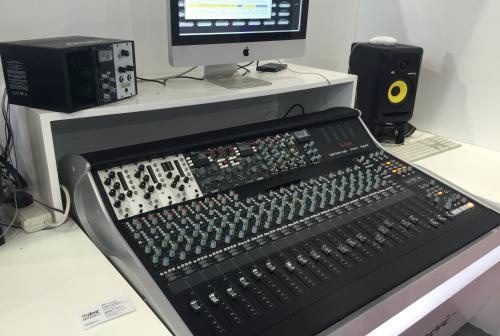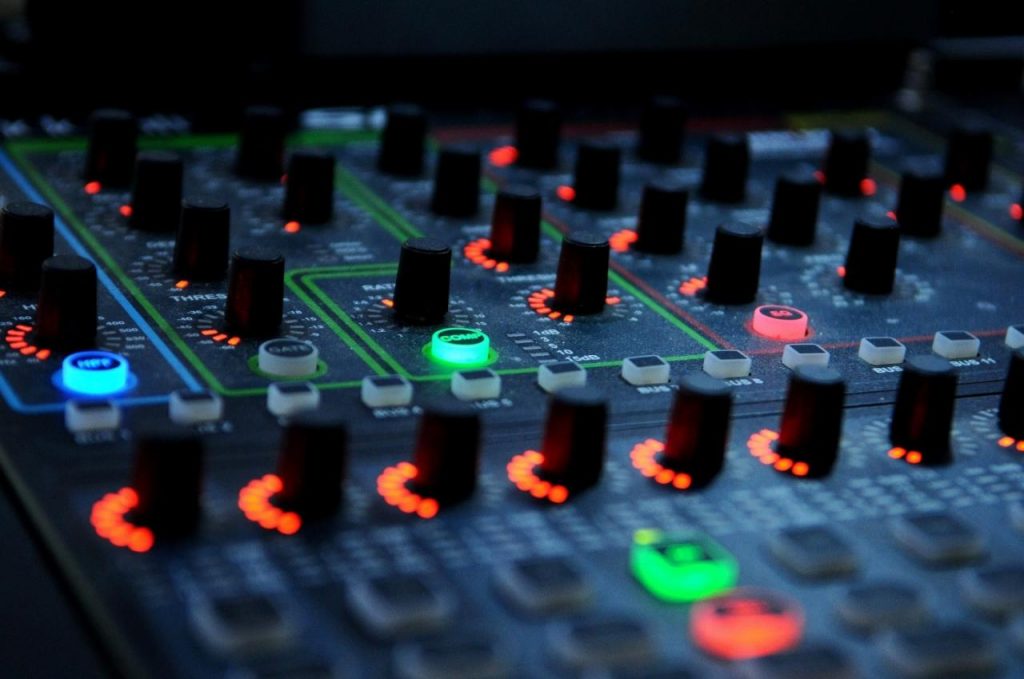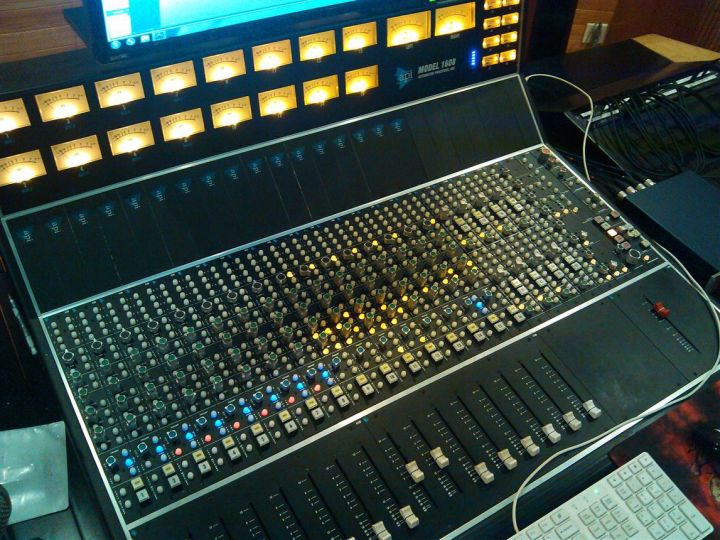Very fortunate that we now have more and more music equipment to choose from and what we can afford, and of course reviews of various music equipment and how to use them well have been discussed in our magazine as well After a lot, all of this is your dream of “turning the room into a high-quality recording studio” into reality. But soon, he began to be dissatisfied with his work performance.
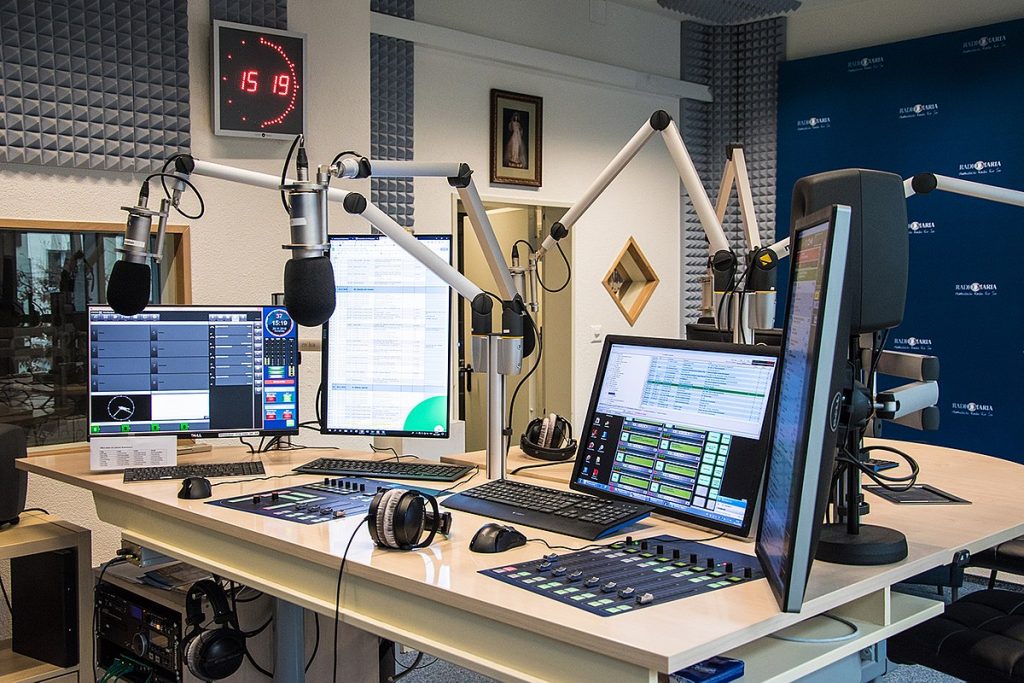 All your romantic longings disappear with the appearance of sound reflections and other acoustic “monsters” that start to haunt you and interfere with the proper monitoring of your recordings and mixing operations. Gotta be clean. The specific manifestation is that when your mix results are played back in other environments, the sound can become very difficult, and the wonderful feeling that you have when you are monitoring in the studio is all gone. To make matters worse, the sound leaks out because your studio is not sealed tightly, causing the formerly good neighbors to glare at you now.
All your romantic longings disappear with the appearance of sound reflections and other acoustic “monsters” that start to haunt you and interfere with the proper monitoring of your recordings and mixing operations. Gotta be clean. The specific manifestation is that when your mix results are played back in other environments, the sound can become very difficult, and the wonderful feeling that you have when you are monitoring in the studio is all gone. To make matters worse, the sound leaks out because your studio is not sealed tightly, causing the formerly good neighbors to glare at you now.
In an instant, you realize the stark reality you face: The rooms in your living room are not designed for professional recording studios. Your recording dream is over! Is this really the case?
That said, there are still plenty of ways you can improve the acoustics of your room without spending too much money. In fact, many of the methods and concepts used in valuable professional monitoring rooms and recording studios can be used in our personal music studio renovation project, and at this time, a person can improve the acoustic environment of your room. experts, will be of great help to you.
For this reason, we took some very well-known studio designers and asked them a very simple but very deceptive question: How to optimize the acoustic environment of a personal music studio consisting of a single room? Surprisingly, even entry-level readers can benefit from these designer answers without having to remodel your room, knock down a few walls, or spend a fortune on renovations. You just need to spend some time and money on improving the acoustic performance of the room, they are much cheaper than going to spend thousands of dollars for consultation, now, let’s officially start to build your personal music studio, make your recordings Dreams become reality.
Acoustic elements
Often, pop singers, producers, and businessmen who hire designers to build studios have enough money to cover the costs, or at least they can afford an existing studio, and then Refurbish it according to your needs. That’s when they dodge a lot of the daunting acoustic problems that were fixed in the studio’s design.
But unfortunately, for a musician who records at home, when he wants to simply convert his bedroom or garage into a recording studio, the choice is to knock down a few walls and start remodeling. Your room is full of surfaces that cause sound to reflect off, such as walls that are parallel to each other, causing the sound from the speakers to arrive at your ears already shifted and distorted in frequency. Obviously, this environment is not suitable for recording and mixing work.
From your subjective wishes, what you want should be a place with as flat a frequency response as possible. “George Newburn sees it this way. He himself is the principal designer of 440 Music Studios and has designed music studios for MCA Music Publishing and Danny Elfman, Peter Frampton and others. He goes on to explain: ‘You don’t want The frequency response in the room has too much protrusion or blind spots because you can never accurately describe what you’re hearing and then compensate for them all while mixing.
So how do you minimize the acoustical imperfections in a room without making major changes to the entire environment? The answer is to minimize the acoustical impact of the room environment at the listening position.
Mixing area
Fortunately, we can provide you with many very effective ways to help you avoid the various acoustic imperfections in the room affecting your ears. First of all, you have to find the best place to place the mixer, because then you will be strictly monitoring the sound here. According to Chips Davis, a world-renowned house designer who has designed the EFX studio at the MGM Grand Hotel in Las Vegas, you can place your mix about 1/3 the depth of the room from the front wall.
He also mentioned: “The choice of mixing location is very, very important, you may spend a lot of time and money for yourself, building a very professional music studio, but if you install the mixer and speakers If it’s not positioned correctly, then everything is lost. For example, if you place the mixer too close to the back wall of the room, you’ll hear a lot of reflections, resulting in a Excessive frequency rendering. Place your monitors too close to the front wall and the reflections from the back wall will have more time lag and you won’t benefit from the Hass effect. The Hass effect essentially excludes the rest of the room, allowing you to focus entirely on the sound coming out of the speakers.
In a bedroom, there should be a lot of space behind the listener,” said Gary Hedden (designer of Bakery Studios in Hollywood and the studios of many musicians, including Adrian Belew and Chester Thompson) Say, “You want the sound to reflect as far away from your mix as possible, and the worst thing you can do at this point is sit with your back against the wall, because then the sound coming out of the speakers will immediately reflect into the on the wall behind you, and then into your ear. ”
Speaker placement
The placement of the monitors relative to the listener’s head, the mixer, and other objects in the room is also a factor that has a significant impact on the mix. In order to prevent the sound reflection from affecting your sound judgment, the two speakers should be placed symmetrically, and you should also be in a symmetrical position with the speakers.
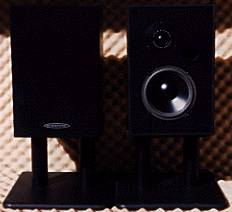 You need to build an equilateral triangle,” says Jack Jacobsen (designer and contractor of Night Ranger and Jefferson Starship music studios), “the distance between the two monitors, and the distance between your head and each Only the distance between the speakers must be equal. For example, if two speakers are six feet apart, then your head shouldn’t be six feet from each speaker. Otherwise, you won’t be able to make the best judgments about the stereo sound, and secondary reflections will have an impact on monitoring. ”
You need to build an equilateral triangle,” says Jack Jacobsen (designer and contractor of Night Ranger and Jefferson Starship music studios), “the distance between the two monitors, and the distance between your head and each Only the distance between the speakers must be equal. For example, if two speakers are six feet apart, then your head shouldn’t be six feet from each speaker. Otherwise, you won’t be able to make the best judgments about the stereo sound, and secondary reflections will have an impact on monitoring. ”
The surface of your mixer also creates a certain degree of sound reflection. So what is the solution?
It’s practically impossible to place the monitors in a position that doesn’t reflect off the surface of the mixer, but we can optimize it as much as possible. “Place your monitors on the slant of the mixer,” said Bob Hodas (a very respected acoustics expert who used his Bob Hodas acoustic analysis to improve hundreds of music studios) The top is arguably the worst thing, because the sound coming out of the speakers immediately hits the surface of the mixer and bounces off that surface to your ears. If your monitors are standing upright, then move them back 0.2 meters and you will change the angle of the sound waves reflected off the surface of the mixer. At this point, most of the reflected sound will be reflected below your head, and it will not affect your monitoring.
Davis also recommends using an absorbent cloth pad to hang above the console head to reduce sound reflections.
The absorbent pad should be about 25mm thick,” he said, “and the sound-absorbing pad should be placed as little as possible from your view of the watch head. The higher the cloth pad hangs, the better it will prevent sound waves from reflecting off the surface of the mixer. Make sure you sit high enough that your knees are almost at the height of the mixer. The sound waves reflected off the surface of the mixer won’t get into your ears, they’ll hit your stomach and chest. ”
Symmetry of the studio
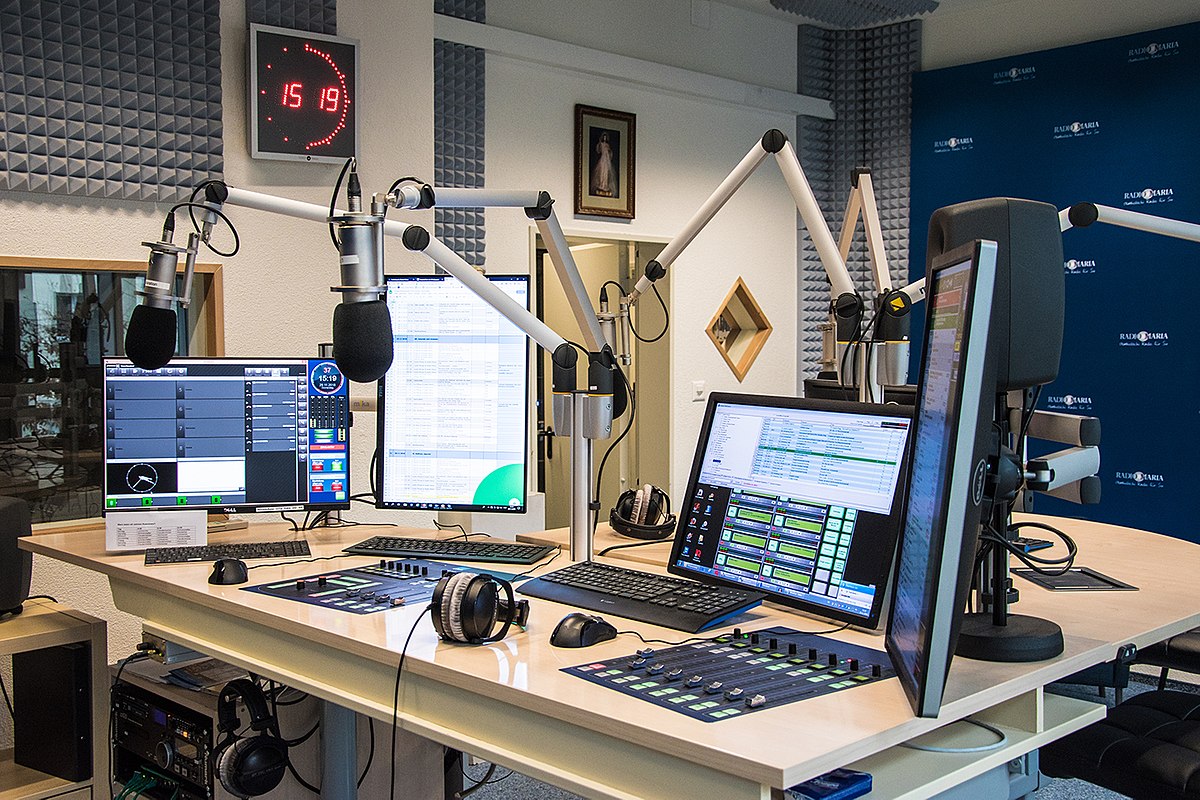 It can be said that “harmony” is a very fascinating state in life, and it is also the most basic requirement in a music studio. Changing the state of either side of your listening position can affect the balance of the sound produced by your monitors.
It can be said that “harmony” is a very fascinating state in life, and it is also the most basic requirement in a music studio. Changing the state of either side of your listening position can affect the balance of the sound produced by your monitors.
“Symmetry is a very important factor when setting up a music studio,” Hodas said. “If you can’t make the environment in a music studio symmetrical, then you’re going to hear from your speakers. An incorrect stereo picture, and the low frequency content will be a mess. If you have a bench on one side of your music studio and nothing on the other side, when the low frequency content passes through the bench in the room It’s ‘struggling’ when it’s on the other side of the mix because there’s a large object there. Obviously, when you’re mixing, this difference can cause you to judge low-frequency sounds differently.”
“You want any acoustic treatment in the space to be symmetrical,” Hodas continued, “if you have a glass window on one side of your room, and you install reflection-reducing foam on the wall on the other side. plastic, then you will get a very unbalanced stereo picture, especially if the windows and foam are installed in the front half of the room, you will first reflect the impact of the sound. The comb filtering effect that occurs at this time will cause Imbalance in frequency response.
Peter Grueneisen (the ace designer of the bau:ton music studio, who designed the famous Bad Animals music studio in Seattle) agrees with the above points about the symmetry and the balance of the frequency response of the left and right speakers. “When you’re sitting in the mix and look at both sides of you, they should be the same,” he says. “For example, you’re placing one speaker too close to the wall and the other speaker too close to the wall. It has to be farther away from the wall.”
Hedden described it to us in more detail: “If you draw a line between your mix position and the midpoint of the two speakers, the left side of the line should be exactly the same as the right side of the line. This Consistency includes the finish, shape, and placement of the walls, as well as the placement of the equipment. Any reflections, absorptions, resonances near the monitor speakers, and any reflections, absorptions, resonances between each speaker and you, should be Exactly the same. Otherwise, your sense of left and right channel balance is nonsense. If you can’t guarantee a very strict symmetry, then you lower those objects that cause asymmetry below the shoulders of one, so that they The damage to the sound is minimized. The key here is to keep the unbalanced reflections below the listener’s shoulders and not into the ears.”
Low frequency monster
In a music studio environment, low frequency content can cause many annoying phenomena to occur. For example, parallel walls can cause low-frequency sounds to bounce back and forth in the room, creating annoying reverberations. However, these cunning enemies also have their weaknesses, the low frequency components tend to be generated in the corners of the room, so we can use a device called a bass trap (we will give it a name for now: low frequency trap), his effect It is specially used to absorb the low-frequency components in the sound. Preventing this low-frequency catcher to the corner can reduce the impact of low-frequency sound.
It’s a shame that using a bass trap takes up space in a studio that isn’t very spacious. The depth of the low frequency trap (which is directly related to its size) depends on the part of the frequency it absorbs, generally, the longer the wavelength of sound you want to absorb, the deeper you need, and the larger it is .
“Low frequency traps usually take up some space to be more effective,” Hodas said. “For example, for a sound frequency of 100 Hz, the sound wavelength you need to deal with is 3.048 meters, and the low frequency trap needs 0.762 meters of space to Absorb it. Depending on the wavelength of the sound, we should use a 1/4 wavelength size low frequency catcher for absorption. For example, if you need to absorb the frequency component of 40Hz, your room may not have that much space to place it. Large enough bass trap.(about 1.9 meters deep)
If lack of space is an issue in your studio, a parametric EQ can be used to help you reconcile your monitor system with the room’s sonic character. Add an external two-channel equalizer to your mixer’s stereo bus to boost or attenuate frequencies that are prone to occur, until you get a relatively flat frequency response at your listening position time.
“When you don’t have a suitable low-frequency capture device in your studio, using a parametric EQ (such as Meyer’s CP10S parametric EQ) to control the low-frequency content is a good idea,” says Hodas. It doesn’t solve the problem acoustically, but it at least helps you build a mix space where the sound you can trust.”
If you’re lucky enough to find a larger house, try installing low frequency traps from multiple manufacturers. The cost of doing so will be quite large, so due to budget considerations, we can make our own low frequency trap, which you can refer to in this article (Appendix 1).
It is very important to note that home made low frequency traps usually require spin glass fibers (one under the brand name Owens Corning), but such glass fibers get into the air and are harmful to health. To keep the air in your music studio free from fiberglass contamination, be sure to wrap them in knitwear.
“You want to make sure the knitwear you use is ‘transparent’ to the sound,” says Newbrun. “The easiest and most convenient way to test whether a knitted fabric of choice is ‘transparent’ to sound is to hold the knitted fabric to your mouth and see if you can breathe well through it. If so, sound can also pass through it . Decorative knitwear is not a good choice at this time, as they are usually very thick and therefore reflect more sound.”
Hedden, a musician who has a knack for challenging structures, suggested an extremely simple way to make a low frequency catcher. “The simplest low frequency trap is to use a piece of fiberboard or plywood in the corner of the room,” he explained. “You just put the fiberboard in the corner and you’re done, of course, between the flat and the wall. The depth also depends on what frequency of sound you want to capture. My suggestion is to place one side of the slab at a distance
The corner is 0.3 meters away, and the other side is 0.6 meters away from the corner, thus creating a triangular cavity at the corner. ”
According to Jacobsen, one of the cheapest low-frequency traps you may have installed in the corner of your room is a seat cushion. “Thick seat cushions have very good low-frequency capture,” he said. “The seat cushion is non-reflective for low-frequency components and has a good absorption effect. In fact, placing any soft furniture in a corner will reduce the low frequency content. The ingredients work.
High frequency noise
Now that we have basically solved the problem of low frequency reflections, it is time to deal with the high frequency sound. Through a mirror, we can see the image formed by a glass. Similarly, for the sound components of mid-frequency and high-frequency, we can also use the mirror to analyze the reflection of the sound.
“Above 400Hz sound waves behave very much like light, so you can use a mirror to predict exactly where the first reflection is going to be,” says Hodas. “Sit where you’re mixing and ask a friend to hold the A reflector that moves over the studio walls and ceiling until you see the front surface of the monitor in the mirror. If you see the speaker in the mirror, that’s where the mirror is There will be a first reflection of your current mix position.”
You’ll also use mirrors to capture the surfaces of the equipment in the music studio that will produce the first reflections. Most music equipment shells and equipment cabinets are made of metal materials, and these metal materials are good at reflecting sound. The angle at which the cabinet and music equipment are placed will directly affect whether there is a reflection correspondence between the monitor speakers and the mixing position, as well as the severity of the sound wave reflection problem.
“You can use two mirrors and a flash to test whether these device surfaces will produce sound reflections at the mix position,” Newburn said. “Place one reflector on the surface of the equipment you suspect may be the problem, and the other on the front of the speakers, then from the mix position, point the flash at the monitor speakers. If the light bounces off the speakers’ reflectors , then reflected into the other mirror, and finally back to the mixing position, which means that there is indeed a problem with the position you originally suspected.”
If you find that the surface of a piece of equipment “hits” unpleasant sounds into your ears, Davis recommends that you turn the piece of equipment (and possibly furniture or something) at an angle so that the sound waves are reflected to the Wall sound at the back of the room or elsewhere, anyway, don’t let it go straight to the mix. “I also like to use 25mm thick knits and place them on the surface of the music device opposite the speakers to absorb some of the reflections.” He continued, “Even if you can be sure that the sound is not reflected to the mix position, but it still gets reflected somewhere else.”
Windows in a room are also reflections, and we generally have trouble removing them from walls. After all, a window with a view outside is more attractive than a room full of lifeless electronics. In this regard, Newburn has a good way to solve the problem of windows, so that you can enjoy the scenery brought by the window without causing excessive reflection. Hang a heavy curtain of velvet. Velvet is a high-density knit that absorbs sound waves at the corresponding frequencies without letting them pass through and reflect off the glass.”
Isolation measures
So far, we have covered the basic concepts and materials to be used to improve the acoustic environment of the room. The next task is to deal with the sound isolation. Obviously, as with most home music studios, if you’re making too much music (whether it’s nice tones or annoying noises) without good soundproofing, your neighbors are going to be terrified. You have an opinion.
The worst case scenario is when you are working hard on your masterpiece, but you are met with outcry from your neighbors, preventing the work from going well. It’s a good idea to try to keep the volume down when working in the early morning and late at night, but this polite behavior can only be exchanged for temporary tolerance from the neighbors. Sooner or later, your voice will annoy some people. Hedden’s suggestion is to use headphones and try to record as close to the microphone as possible to reduce the volume of the sound.
“In the studio, if you’re using headphones for monitoring, and you’re recording as close to the mic as possible, you’ll get pretty good volume control,” he says. Lower it so that the volume level is relatively balanced with the monitor level, and your working environment is relatively quiet.”
Of course, you can’t keep the volume this low forever. When you overdub a snare drum, no matter how close or far away your mic is, the sound is so loud that those very sensitive neighbors can’t stand it. Then there are the singers, whose voices can be so loud that you can hear them on the street, especially if you keep repeating a certain song for the best recording effect. One way to avoid the above problems is to fill your music studio with so much stuff that neither low frequency nor high frequency sounds can easily pass through the walls and out of the studio.
“Doors and windows are the weakest link when it comes to sound isolation, because you can’t treat them like a wall,” Hedden said. “But there’s a solution here. A door , usually 45 mm thick, with wooden boards on both sides and filler in the middle, from the perspective of air tightness, this can be said to be the best performance-price ratio. The thermal insulation performance refers to keeping the warm air at In the house, and the cold air is isolated from the outside, this requirement is also as important as air tightness. In addition, the lower end of the door frame can be in contact with the carpet. Ordinary door handles will also cause us trouble, and the door Improper installation of the door can also cause sound leakage. The best way is to allow the door to be pushed open from one side, so that the door handle does not have to be installed.”
Newburn recommends sealing the top and sides of the door. “You should also install weatherstrips on the bottom of the doors, but in a carpeted room this can be a little difficult because the carpeted surface is not as hard as the ground, and with the weatherstrip installed, the door will have some difficulty opening and closing.” “However, you can block the bottom of the door with a towel when you start working,” he said.
In the previous discussion of the acoustic environment, the window is the problem we need to solve, because it is the sound reflection surface. But when it comes time to talk about sound isolation, windows come again, because a single pane of glass is too far from the standard deviation of sound isolation.
“To keep the sound from leaking out of the window, I made a piece of Styrofoam and tucked it into the window frame,” Jacobsen said. Place the aluminum backed side next to the glass to reflect heat and light from the outside. You can only use the foam for recording and mixing, and remove it for other work.”
Improve your room
Unfortunately, the method we discussed earlier using mirrors to find sound reflections is somewhat ineffective for room frequency anomalies.
To really fix the acoustics in your studio, you’ll need to “revamp” the room, which includes testing the frequency response of your monitors in the room’s natural mode.
“The ratio of height, length and width of any space has its natural resonant frequency, or mode,” Davis explained. “If you sing in the bathroom, when you sing to a certain pitch, you don’t pay too much. A lot of strength, but the sound fills the whole bathroom, then you have found the natural resonant frequency of the bathroom. For example, let’s say that the natural resonant frequency of a room is 39.7Hz, which is bass E. Then if I Play the open 6th string on the guitar, the low E, and it will keep ringing in the room.
Obviously, if the current frequency happens to be in the same mode as your music studio, you’re going to be fooled when you mix and attenuate it too much by mistake, when in fact the sound in the mix isn’t What you hear is so strong. In other words, this resonance phenomenon makes you do the silly thing of twisting the knobs on the equalizer, destroying the entire sound spectrum of the mix. Furthermore, each room has its own acoustic characteristics, which will affect your judgment of sound.
In addition, a side benefit of researching resonance problems is that you can check that the sound phase relationship between your monitors and other recording equipment is correct. By testing you can decide which wall of the room needs to be installed with frequency absorbing material (making the studio space more acoustically “inactive”) or frequency diffusing material (which reflects sound waves in all directions without absorbing them) ).
“If you’re serious about your work in the music studio, then the remodeling of the room should also be very strict,” Hodas said, “if you can get a line between your room and your recording system. Very flat frequency response curve, then you can trust your ears more, work faster, and have more fun. For example, if every time you finish mixing work, take the recording to three or four Try listening to a different sound system (your car, your friend’s stereo, a lousy one, etc.) to make sure the mix turns out to be a success. Not happy. You should be able to produce good mixes in your own music studio and be guaranteed to play well no matter what sound system you play back on. Of course, you can take advantage of your music studio’s acoustics characteristics, and let this characteristic serve you to get a wonderful sound, but can you guarantee that other people’s listening environments have this characteristic?”
Your final decision on whether to remodel your music studio (either do it yourself or hire an expert trained in this area) may come down to how much money you have on hand and how much you value the acoustic environment degree. If you want to make the effort to transform your music studio, you should start by listening to some of your favorite records in the studio. Ideally, your room and sound should be able to restore the original musical style, and the performance of the instruments should be very realistic. During music playback, try boosting or attenuating frequencies that you can’t hear when you’re listening on headphones and other sound systems.
Although this is only a very basic method for testing the frequency response of a room, occasional problems heard during sound testing can reveal potential problems in your recording studio. You should buy some demo discs, such as MIX REFERENCE DISC (MIX REFERENCE is the company’s published version) to test your room’s response to the sound of a specified frequency.
“A test disc can give you an idea of the acoustics of the recording environment, such as whether a certain sound will persist or disappear immediately in the room,” Davis explained. “Let’s use a 40Hz sound. Take the sound as an example. If it suddenly rings and disappears, you will still hear the sound of “Crash…” continuing. However, the next sound with a frequency of 50Hz will disappear very quickly. Now, you Knowing that the natural resonant frequency of your room is around 40Hz. Obviously, when you are recording or mixing, 40Hz sound is very common in the room.”
A more objective way to test the frequency response of a room is to rent a real-time frequency analyzer (RTA) with a resolution of 1/3 octave. This device can extract 31 different frequency points from your room for measurement. A high-end real-time analyzer can cost $900. But you can rent this equipment for $100 a day.
While a real-time analyzer can’t tell you all about how to improve a room, it can pinpoint problem frequencies more precisely than an untrained ear can.
“Even a very cheap real-time analyzer can contribute to improving the acoustics of a room,” Jacobsen said. “For example, when I’m in the studio, I turn on the real-time analyzer and I use it for the entire job. If there is a sudden feedback phenomenon at some frequencies, the first thing I do is go to my real-time analyzer. Look! My instrument has pointed me to the What are the frequencies that are annoying. You can also use the real-time analyzer as an ear training device that can pinpoint a specific frequency in the sound spectrum for you. Soon, when you start using an equalizer for your mix , you’ll know which knob to turn, and in which direction to turn that knob.”
“However, be aware that a real-time analyzer is not the answer to everything,” Jacobsen continued, “if you EQ your monitor until it gets a very smooth frequency response curve (using real-time analyzer measurements), it does not mean that you have completely improved the acoustic environment of the room, because the real-time analyzer cannot tell you anything about the reverberation time and phase relationship.”
Jacobsen’s presentation shows you the potential dangers of doing a room “makeover” yourself: there are a lot of things you don’t know, and they’re exactly the things that can hurt your mix. In order to improve the acoustics of a room, knowledge about acoustics is essential. Only in this way, you will know why the sound of a certain frequency band is always a mess.
“If the room has a physical defect in the frequency response of the sound, then using an equalizer on the playback system to compensate for the frequency holes you find is not a good idea,” Davis said. “If you’re just using an equalizer to compensate for the room If there’s a hole in the mid-frequency response, then you’re destroying the sound spectrum. For example, take a real-time analyzer, place its mic where you’re sitting when you’re mixing, and start tweaking the lowest frequencies. Equalization, if your ceiling height is 2.4 meters, then you have to deal with the low frequency phenomenon between the floor and the ceiling. This is a law of physics, and you cannot solve this problem with an equalizer.”
In order to solve acoustic problems in a music studio, it is very beneficial for you and your studio to have an expert in this area. But you have to be prepared that an acoustic specialist will probably cost you $500 to $1000. In order to find out where all the money was going, we asked Hodas to write down what he was doing and what equipment he used.
“The system I used when I remodeled my music studio was MEYER SOUND SIM SYSTEM 2, and I’ve passed a rigorous certification exam by MEYER SOUND LABS,” he said. Going to the store to buy a test system and doing random work, so they have a very strict test process. With SIM SYSTEM, I can do very fine analysis work, like resolution up to 1/24 octave .By comparison, for most inexpensive systems, the resolution is up to 1/3 octave. If I use a system of this class, it is like I am saying to you, “I am here to give Your piano is tuned, but I can only tune 12 keys!””
Facing the fluttering echoes in the room
Do you remember the sound effects that echoed “Boom…boom…boom…boom…” from horror movies? This terrifying sound is an example of fluttering echo – a sonic distortion phenomenon that literally drives musicians and producers in music studios insane. The easiest way to check for this kind of acoustic flaw in your studio is to clap your hands. If you hear a “Jason effect” at one point, then you have a fluttering echo in your studio. But, according to Chips Davis, the presence of flapping echoes doesn’t mean you’re working in a substandard music studio.
“When I see people walking into a room and clapping their hands and saying, ‘Oh, no, there’s a fluttering echo here.’ I go crazy about that sometimes,” he said. “If you’re in Clap your hands somewhere and hear a fluttering echo, then you must be at those points that are directly affected by the echo. If it’s from the other side of the room, it’s not going to be when you’re mixing or recording. Hear it. I mean, do you hear the national echo in the monitors? You could experiment with having your drum machine sound a snare drum through the speakers. At this point, if you’re in your mix If you don’t hear a flapping echo at the sound position, then don’t think about it anymore. You just care about the acoustics of the listening position you’re mixing in.”
“If you do hear an echo in the mix, simply change the angle of the speakers and the echo should go away,” Davis continued, “if that’s the worst kind of echo you’re experiencing. , then all you have to do is to treat the front or rear walls, install foam with sound-absorbing effect on them, and adjust the placement angle of the monitor speakers. After this treatment, you can follow others How about clapping your hands in the room!”
“When I’m testing a music studio, I’m looking for 245 points in the room,” Hodas continued. “If you have two or more monitor systems, I’m going to test them to Make sure the polarity is correct for every pair of speakers, every speaker. This is very strict, because if your speakers are polarized, then when you switch from one monitor speaker system to another , there will be a situation where the element in the sound (such as the singing of the human voice) moves forward or backward. What you want should be that the left and right speakers are in the correct phase, and the two tweeters have the same direction. Use With the SIM system, I can send phase flaws very quickly because I can observe the phase relationship in real time.”
Hodas also implemented an acoustic shock response system to identify reflections in the room. He even checked the mixer’s stereo bus to see if there were any electronic malfunctions that would cause the sound to go wrong.
“If you find that you have a mismatch of more than 2/10dB on the left and right channels of your mixer, then this will cause the stereo spatial distribution to flip to one side,” Hodas said. “SIM systems have up to 1/10dB of mismatch. resolution, so I can look at the mixer’s phase and see if any capacitors are faulty — a cause of errors in phase and frequency response.”
Wrestling with power
Acoustic anomalies that occur in a recording studio cannot all be resolved by the studio’s designers during the design process. Today, even the most modern home music studio can’t avoid plugging all kinds of plugs into the wall sockets, even all kinds of connections, and every electronic using electric. It can be said that the power supply is the lifeblood of your recording equipment. Therefore, the power supply used in the music studio must be absolutely safe and clean. Otherwise, you may be bothered by “hums” and other noises. And these noises will turn your music into a pile of junk. Plus, electrical surges, sudden dimming of lights, and sudden blown fuses can put your expensive recording equipment and carefully crafted mixes at risk.
Before you start building a safe, efficient power system, Hedden recommends that you first figure out the distribution of power wiring in your home. “It’s very important to figure out which appliances are running on the same power line as your recording equipment,” he said.
Jacobsen gave us a very easy way to determine the distribution of wiring that was causing power problems in the studio. “First you have to find your home’s power switch box, and then find out which switch is controlling the studio’s power,” he said. “Turn on a small desk lamp and plug it into each socket. Plug them all in again, if every time you disconnect one switch, the small desk lamp goes out, which means that the power lines of these sockets are controlled by the same switch. Usually, there are only 4 power sockets in the bedroom, but each A single switch can control 8 power outlets, so it is possible to have two houses share the same circuit. Deciding whether to use the same power source for your recording studio as the other rooms is a very serious matter. For example, if you will Your music studio shares a power source with the kitchen, so while you’re mixing and someone uses the kitchen mixer, you’re bound to hear a ‘hum’ from the monitors. If you’re in Record it, and those ‘hums’ go into the instrumental or vocal track.”
In order to avoid the above situation, and in order not to frustrate your patience and production ability, you should not hesitate to separate the power supply of your music studio from other power lines (so that it can be called a “music studio” worthy of the name.). You might even have to go to a professional electrician to rewire, but it’s well worth the cost. Otherwise, you won’t be able to work while your family is preparing dinner, vacuuming your house, and many other things will bring nasty noise to your recording system.
“You should also be careful not to plug all electrical appliances into the power supply, such as electric heaters or fans, etc., so that they can all share the limited current.”
Jacobsen reminds: “Each line can draw at most 20 amps of current. If you use more than 20 amps on the same line, it will trip, and an electric heater will draw about 10 amps of current. Very Luckily, we still had a lot of current. So, 3 ADAT recorders, a big mixer, a full two racks of gear, a pair of monitors and an amp—but that’s all That’s 7-8 amps. But if you’re going to be using bass amps, subwoofer systems, and anything else that requires a certain amount of current, you’re going to have to blow fuses, cut power, shut down.” (Note here: the voltage standard in the United States is 120V, while the voltage standard in my country is 220V, so in the case of the same power consumption, for example, a 1200W electric heater, the current used in the United States is more than 3 times larger. And the electric meter in the average home in our country is not as big as 20 amps. —Translator’s Note)
Some home power systems are only 15 to 20 amps, and Steve Oppenheimer, senior editor of Electionic Musician magazine, strongly recommends 20 amps for personal music studios. Open the breaker box in your home and take a look to see how much current is allowed.
“My home music studio has been running 15 amps for many years, but 20 amps will give you more power,” Oppenheimer said. It saves the power system in your home from overloading it when the music studio is running. An electrician can help you convert the power supply to 20 amps very easily. There is no danger in doing this, and you should do this modification.”
The quality of the power supply in your music studio is a very serious issue. “You certainly want to plug these thousands of dollars into a very secure electrical outlet,” Jacobsen said. “A bad power system is usually the result of no neutral, or a tangle of ground and neutral. Also, either the hot and neutral wires are reversed. I recommend that you use a plug that can detect the wiring (or use a test pen), so you can check for yourself which is hot and which is The root is neutral. This gadget usually only costs you a few dollars, but it protects your expensive equipment. You just plug the test plug into an outlet in the house and it will tell you if the wiring is Wrong. Of course, if you find any problems, you’ll have to get an electrician to fix the wiring system for you.”
To better protect your recording equipment, Hedden recommends buying an isolation transformer. “This kind of equipment will cost you about $200, but it can help you significantly improve the signal-to-noise ratio of your recording system,” he said. “For your calculator and other equipment, I also recommend that you use a different Intermittent power supply, the UPS we often say. Buying a UPS costs about 150 US dollars (the price of a UPS in China is about 150-600 yuan). When your home suddenly loses power, it can prevent all your work from being lost. , so as not to beat your chest. For example, when you are arranging audio tracks, suddenly there is a small fluctuation in the power supply, then the data stored in the calculator memory will not be lost. This is because there is a set of backup batteries inside the UPS, when there is a problem with the power supply , the UPS immediately switches to battery power, earning you a few minutes of saving and shutting down.
Lighting system
In your studio, in addition to the above, subtle changes in light can have an impact on your work. In a recording studio, for example, the light adjusters can be annoying and disappointing. The reason is that light dimmers usually make a “humming” noise, which is very annoying, it’s annoying, it’s distracting, and it burrows into your recorded soundtrack go.
“That ‘hum’ can go into anything, including mixers and microphones,” Hedden said. “If you already have this light modulator installed in your studio (and I have to say I don’t recommend it in music studios), then do a test to see if it has any effect on your equipment. Hold one Use a battery powered FM radio and tune it to a position without any stations. If you hear a ‘hiss’ then everything is fine, but if you hear a ‘hum’ 80% of this noise is from your light conditioner. You should also be careful not to use fluorescent lights, because its rectifier also makes a ‘humming’ noise.”
“Also, be careful with halogen lamps, because some halogen lamps use switching power supplies, which can cause low voltage.” He continued, “I plugged one of these halogen lamps into my desk, so The calculator doesn’t work, I can’t use my mouse. So I’d rather use a standard 220v light bulb than this low voltage halogen light. All in all, a light that emits light by heat (like a normal incandescent bulb) is the best choice.
Comfortable environment
Let’s face it: your home studio is small and crappy, and it’s often keeping you from getting your gear out of the way, or your gear isn’t positioned so you can easily operate it, or easily reach it. to it. Every time you want to pick up a piece of equipment, you have to twist your body as hard as possible to get your hands to reach this position more than half a meter from the mixing chair. This is really bad! Fortunately, with well-designed music studio-specific furniture, it’s easy to pick up any piece of equipment.
“Musicians buy all the music equipment they can, but they don’t think about where to put it, so a lot of it sits on the floor.” Phillip Zittell, vice president of sales and marketing at Omnirax, said: “We have a great solution for this, where you can place everything in your studio and it’s ergonomically designed. “We even measured the height of the individual units throughout our workstation to make sure the monitors could be placed in the proper place.”
As for the placement of speakers, we know that the mixing position in your studio is strictly determined. However, many sound engineers are still ergonomically thinking and place the mixer on a small folding table or make do with a bench. Since the calculator can cause problems with frequency response, this may force you to have to move your monitor system out, away from the position where you get the sweetest sound. Relieve mixing fatigue with specially designed music studio furniture, a new type of dedicated furniture, the Mixer Rack, does just that, and it also keeps your Mackie 8 bus A mixer or Yamaha’s 02R looks like an overpriced Neve console.
“Like most people, I also bought a Mackie 8-bus mixer.” David Atkins, founder and president of Argosy Consoles said, “My wife wanted me to figure out a way to not have so many connections in the back of the console, and I told her that I would try to design a way to Great way to get the signal into the mixer. But since I couldn’t really find anything better, I started to come up with a rack specifically designed for the mixer, which is modeled after the larger mixers “.
“We found that with a large number of 8-bus mixers coming into home music studios, everything could be controlled from the same device, creating a more organized workspace.” Atkins continued, “For example, you can connect your peripherals to the mixer and control it without having to put it in a normal rack that is eight feet away from the monitors. Obviously, when you want to use A piece of equipment behind you, or every time you have to turn sideways to turn a knob on a compressor can be inconvenient. With a console rack like this, you can The compressor parameters are adjusted on the console, and the head never leaves the best position for monitoring.”
However, whether you use specialized or generic furniture in a music studio, keep in mind that any furniture will create frequency resonances that affect your judgment of the sound spectrum. “Furniture in a music studio should be ‘transparent’ to sound,” says Heeden. “It’s a good idea to place your music equipment in furniture that doesn’t have too many cavities. A test to see if the furniture will The easy way to resonate is just to knock it, you shouldn’t hear any bells, hums or clicks. That said, the overall structure of the furniture should feel very solid.”
Comfort means more than just ergonomics. Spend a few hours or even days in your music studio, alone or with other musicians or technicians, and see if it’s “horrible” “a feeling of. Also, is the room very stuffy, sweaty and breathless?
“With a lot of music equipment, lights and people, the temperature in the music studio can be high,” Hedden said. “But to improve the acoustics, you also have to reduce the air movement. You want to keep the studio as a warm box, then install a separate air conditioning system outside the room, and blow cool air into the work room through the vent. This system usually puts the noise-producing part into a box, and then the box Installed outside the room, so the noise in the music studio will be very low. If your home has central air conditioning, you can also install a central air conditioning vent into the music studio.”
“Many people I know have window air conditioners in their music studios,” Hodas said. You can turn it on periodically to lower the temperature in the house. But obviously, this air conditioning system is not suitable when you are going to do very strict monitoring, but you can turn it on when you are ready for work, So that the room is more comfortable when working.”
For a less expensive option, you can use a desktop fan to blow your gear and mix position and speed up the air movement in the room. Of course, you can’t run the fan when you’re mixing and recording, but you can use it for a few minutes when your ears get a little tired. Likewise, keeping windows and doors open and using an electric fan while you give your ears a short break will allow the hot air to escape quickly.
But it’s a little too inefficient to take very frequent breaks during the hot summer months, but those eccentric musicians and sound engineers usually work very, very slowly.
Final statement
It is my sincere hope that these tips, points, and lessons learned will bring joy to your arduous and long journey through the music studio. When all the sounds are amazing, that’s when you feel confident about the quality of your music. Plus, when your music studio no longer has any acoustic deficiencies, that’s when your monitoring levels are greatly improved. To put it simply, it is a great joy to have a great personal music studio.
We believe that with the help and guidance of so many well-known music studio designers, building a music studio of your dreams will no longer be just an impossible dream.
